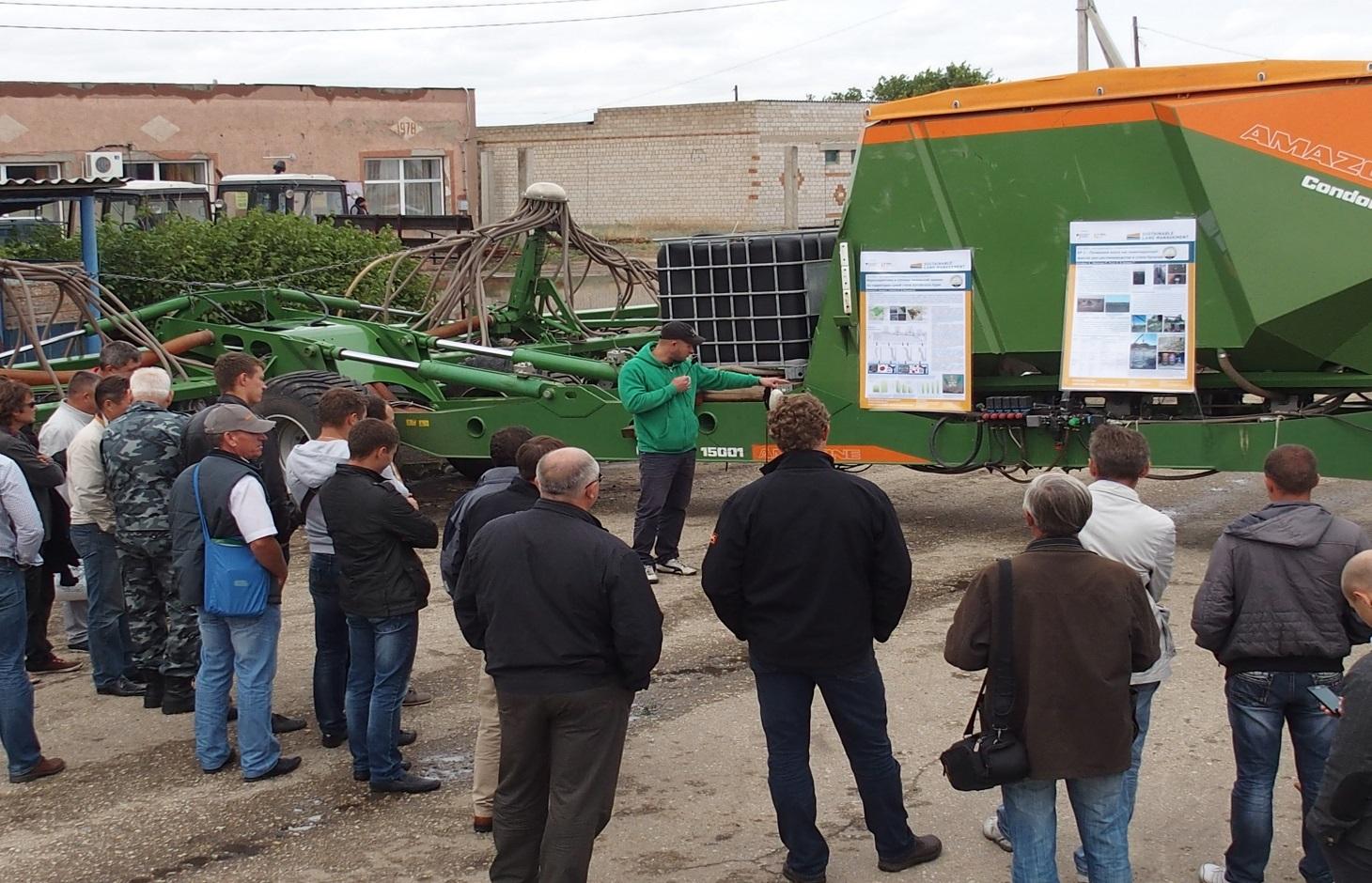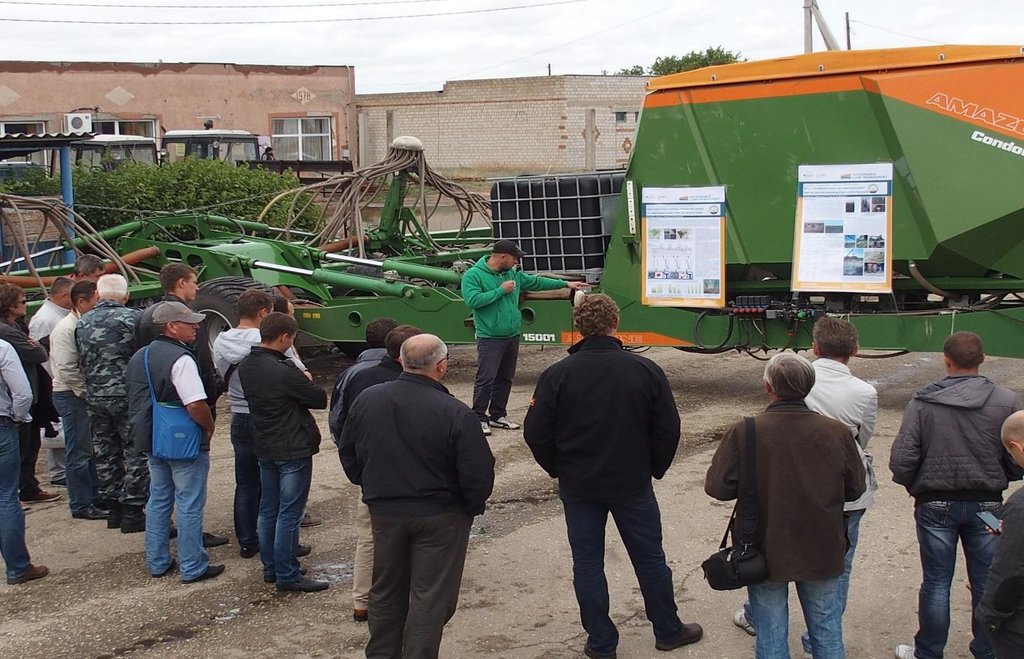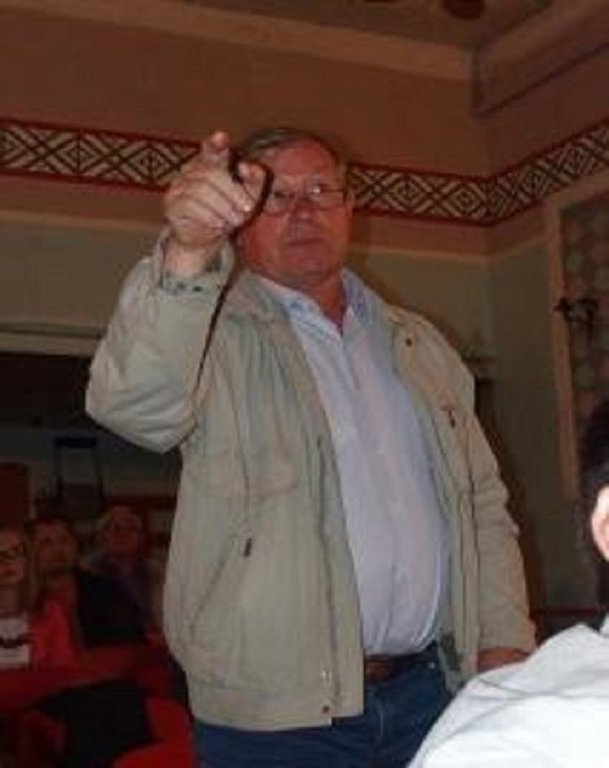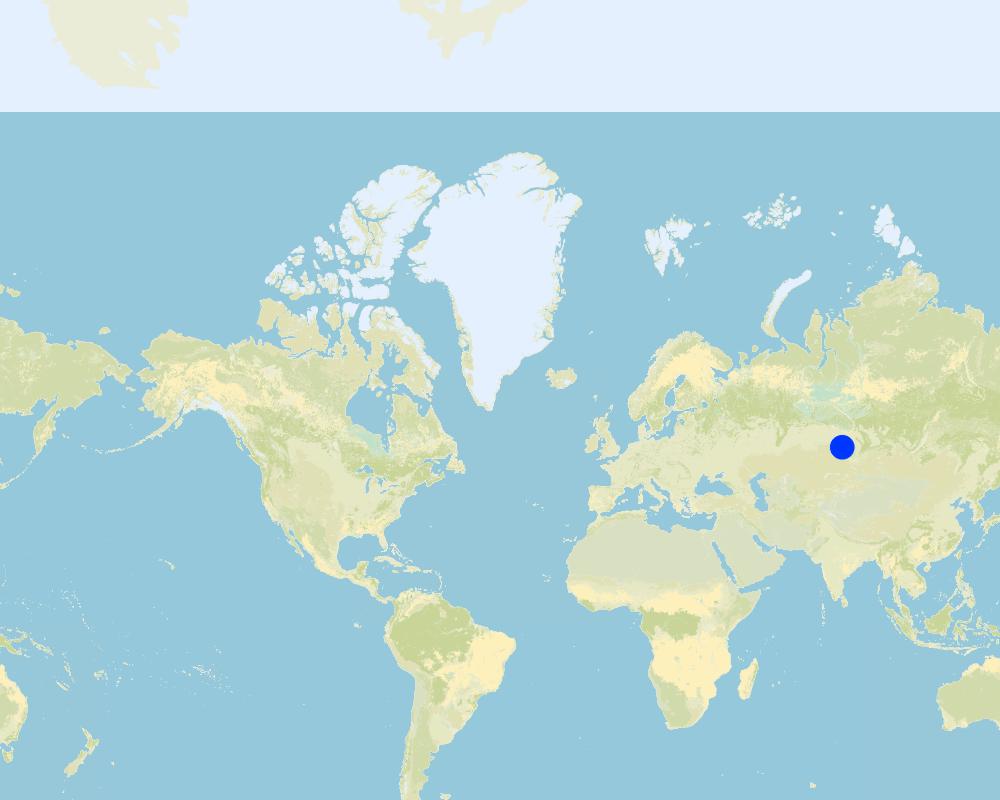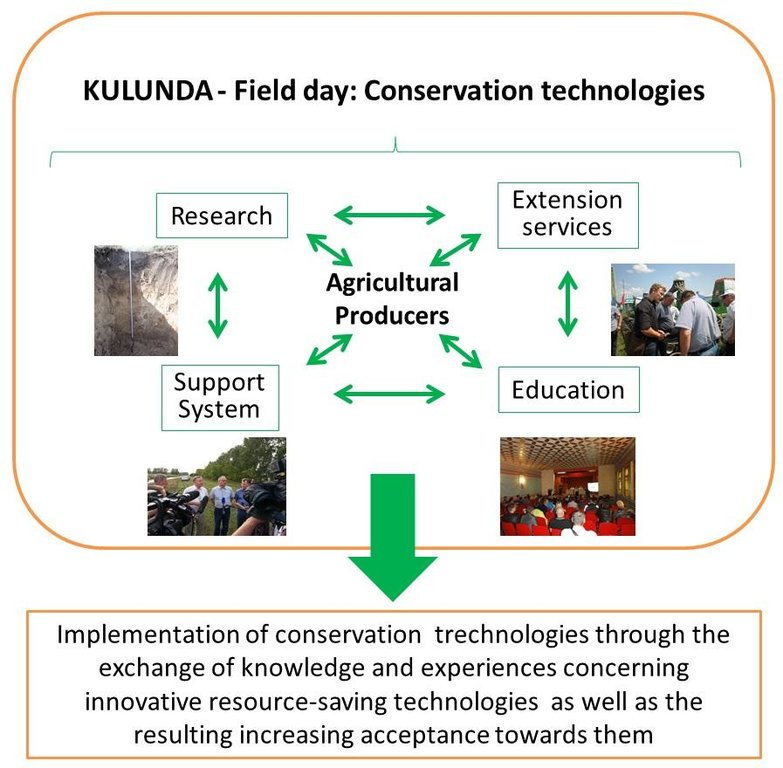Field days [الاتحاد الروسي]
- تاريخ الإنشاء:
- تحديث:
- جامع المعلومات: Peter Liebelt
- المحرر: –
- المراجعون: David Streiff, Deborah Niggli
Полевой семинар
approaches_2617 - الاتحاد الروسي
عرض الأقسام
توسيع الكل طي الكل1. معلومات عامة
1.2 تفاصيل الاتصال بالأشخاص الرئيسيين لمصدر المعلومات والمؤسسات المعنية بتقييم وتوثيق النهج
متخصص في الإدارة المستدامة للأراضي:
Jelinek Ladislav
Martin Luther University Halle-Wittenberg
متخصص في الإدارة المستدامة للأراضي:
Kasarjyan Milada
Martin Luther University Halle-Wittenberg
متخصص في الإدارة المستدامة للأراضي:
Wust Andreas
Martin Luther University Halle-Wittenberg
متخصص في الإدارة المستدامة للأراضي:
Bavorova Miroslava
Martin Luther University Halle-Wittenberg
متخصص في الإدارة المستدامة للأراضي:
Herzfeld Thomas
Martin Luther University Halle-Wittenberg
متخصص في الإدارة المستدامة للأراضي:
Imamverdiyev Nizami
Martin Luther University Halle-Wittenberg
متخصص في الإدارة المستدامة للأراضي:
Hiller Karsten
Martin Luther University Halle-Wittenberg
متخصص في الإدارة المستدامة للأراضي:
Kley Dorothee
Martin Luther University Halle-Wittenberg
متخصص في الإدارة المستدامة للأراضي:
Illiger Patrick
Martin Luther University Halle-Wittenberg
متخصص في الإدارة المستدامة للأراضي:
Frühauf Manfred
Martin Luther University Halle-Wittenberg
اسم المشروع الذي سهّل توثيق/تقييم النهج (إذا كان ذلك على صلة)
Sustainable land management in the Russian steppes (KULUNDA / GLUES)اسم المشروع الذي سهّل توثيق/تقييم النهج (إذا كان ذلك على صلة)
Book project: Making sense of research for sustainable land management (GLUES)اسم المؤسسة (المؤسسات) التي سهلت توثيق/تقييم النهج (إذا كان ذلك على صلة)
Martin-Luther-University Halle-Wittenberg (Martin-Luther-University Halle-Wittenberg) - ألمانيا1.3 الشروط المتعلقة باستخدام البيانات الموثقة من خلال WOCAT
متى تم تجميع البيانات (ميدانيا)؟:
19/07/2016
يوافق جامع المعلومات والشخص (لاشخاص) الرئيسي لمصدر المعلومات على الشروط المتعلقة باستخدام البيانات الموثقة من خلال WOCAT:
نعم
1.4 المراجع الخاصة باستبيان(استبيانات) تقنيات الإدارة المستدامة للأراضي
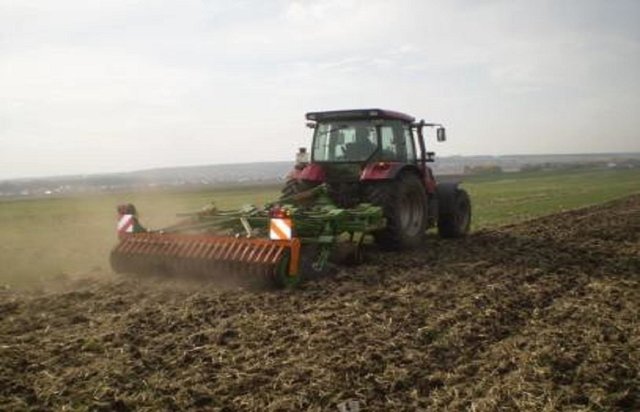
Minimum Tillage [الاتحاد الروسي]
Minimum tillage is a one-pass operation combined with sowing, using a classic Russian seeder modified for seedbed preparation and soil mixing. It can include shallow stubble cultivation after harvesting.
- جامع المعلومات: Peter Liebelt
2. وصف نهج الإدارة المستدامة للأراضي
2.1 وصف موجز للنهج
Field days are events for regional stakeholders, mainly farmers in the study area, to discuss their demands regarding scientific help, and to be informed about the activities and results of new methods and technologies for conservation agriculture.
2.2 وصف تفصيلي للنهج
وصف تفصيلي للنهج:
Aims / objectives: The approach aimed at raising awareness, encouraging exchange and communication for new sustainable land management (SLM) technologies including no-till and minimum till. The main goal - implementation of improved SLM technologies – was intended to be achieved through capacity building and strengthening of the acceptance of new technologies Field days, organized at a partner farm/ study site in Poluyamki (Mikhailovski Rayon), were a suitable framework for the achievement of this goal. Another objective of the field day is cooperation and networking between farmers, scientists, representatives of the regional politics and administration, and commercial companies. This stimulates the exchange of knowledge and the dissemination of new information about SLM - which is very important for the successful implementation and evolution of the technology.
Methods: For effective presentation of the minimum and no-till cropping systems to the public, and to give everyone present at the field day the opportunity to inform themselves about conservation measures, an information point was set up by the project. For spread of information about research activities, results and recommendations, posters were presented - and leaflets and brochures were handed out. In this way it was possible to promote knowledge transfer from the scientists to the farmers, and to receive feedback.
Stages of implementation: Furthermore, interdisciplinary and transdisciplinary knowledge exchange and discussion was initiated about the results and recommendations, which were based on the presentations given in the community centre. Due to the participation of many important local stakeholder groups, the field day was a suitable platform to contribute to network-building. Also, among the participants were private companies working in the agrarian sector. The cooperation partner of the research project, the Amazone company, also made presentations. In the study site the new tillage systems are already working. Furthermore the test farm unit in Poluyamki has also started to implement no-till and minimum tillage systems on fields outside the test farm, on farmer’s fields that do not belong to the project’s research sites and are not under the control of the project staff.
Role of stakeholders: Farmers are the stakeholders of primary importance, since it is hoped they will take up and implement the conservation technologies. Therefore most participants during the field day were farmers. Those invited are interested in new technologies and have the necessary financial power to invest in new technologies. The chances of successful implementation in their farms are very good. Most of these farms already have experience in conservation technologies. In the investigation area, about 20-30% of land is already cropped/ cultivated under some form of conservation soil tillage.
2.3 صور عن النهج
2.5 البلد/المنطقة/المواقع التي تم تطبيق النهج فيها
البلد:
الاتحاد الروسي
المنطقة/الولاية/المحافظة:
Altai Krai
مزيد من التفاصيل حول الموقع:
Mikhaylovski district / rayon
التعليقات:
Area of the test field: 0.13 km2
Total farmland, where the field day was organized: 250 km2
Whole investigation area, where the participants of the field day came from 80 000 km2
Map
×2.6 تواريخ بدء وإنهاء تنفيذ النهج
أشر إلى سنة البدء:
2013
سنة الإنهاء (إذا لم يعد النهج مطبقًا):
2016
2.7 نوع النهج
- قائم على مشروع/برنامج
2.8 الغايات/الأهداف الرئيسية للنهج
The Approach focused mainly on SLM with other activities (Awareness raising for the importance of environmental as well as economic sustainability)
Improvement of technology adoption through: Awareness raising, knowledge exchange and transfer, capacity building
The SLM Approach addressed the following problems: - Low agricultural production of conventional/ traditional farming systems
- Limited economic efficiency of conventional/ traditional cropping systems
- Lack of soil water and decrease of soil fertility under conventional/ traditional farming systems
- lack of technical knowledge to implement modern adapted technologies for cropping and cope with more extreme events such as drought
2.9 الظروف التي تمكن أو تعيق تنفيذ التقنية/التقنيات المطبقة بموجب النهج
المعايير والقيم الاجتماعية /الثقافية/ الدينية
- معيق
Historically-caused low levels of trust among land users and other local stakeholder groups like education institutions or consulting services, among others, limits the adoption of “good farming practices”.
Treatment through the SLM Approach: The field days and exchange of practice – oriented knowledge increased the confidence of farmers. This constraint can be addressed by specifically targeted policies, e.g. provision of grants or credit for the establishment of producer groups.
توفر/الوصول إلى الموارد والخدمات المالية
- معيق
High cost of new minimum and no-till machinery and difficult access to credits. Budget limitations are proportionately greater with smaller farms (highly variable yields reduce farm profitability, limited access to external funds)
Treatment through the SLM Approach: Subsidised interest rates for machinery. In 2015 machinery for no-till tillage was not susidized.
Demonstrate that environmentally friendly innovative farming technologies are profitable and worthwhile to invest in.
الإطار المؤسساتي
- معيق
Unfavourable framework conditions and low capacity of the administration to monitor the state of land and to enforce the soil protection law which would oblige land users to adopt conservation measures.
Treatment through the SLM Approach: The approach did not address this factor.
الإطار القانوني (حيازة الأراضي، وحقوق استخدام الأراضي والمياه)
- معيق
Unclear land use rights. High share of rented land. Missing incentives to stimulate land users to adopt conservation practices. Secure land use rights motivates to more conscious care for the land and stimulates farmers to adopt better practices.
Treatment through the SLM Approach: To make the best of private ownership, land users need to get a better concept of farming as a business. Strengthen the role of the ‘state redistribution of funding’ system (between different branches of the economy).
The existing land ownership, land use rights / water rights moderately hindered the approach implementation There are still some legislative and administrative weaknesses that limit the full execution of the ownership rights (non-defined borders, lacking cadastral registration of some plots, missing owners, etc.). Furthermore, around half of the land utilized in Altai Krai is owned by the state (of that around 2 milion hectares are administered by the Redistribution Fund). Another aspect is the capacity of the state monitoring agency (State Veterinary and Phytosanitary Controls) to control the compliance of the rules provided the land use conditions are stricter.
المعرفة حول الإدارة المستدامة للأراضي، والوصول إلى الدعم الفني
- معيق
In Russia conventional / traditional cultivation still prevails. although market for no-till technologies is fully developed and functional. Various machinery companies either have branches or production units in Russia.
Treatment through the SLM Approach: More events where experience and results of min- and no-till can be shared and discussed.
3. المشاركة وأدوار الأطراف المعنية
3.1 أصحاب المصلحة المعنيون بالنهج وأدوارهم
- مستخدمو الأراضي المحليون/المجتمعات المحلية
Local farmers of the Altai Krai
- المنظمات المجتمعية
Local farm cooperatives of the Altai Krai
- متخصصون في الإدارة المستدامة للأراضي / مستشارون زراعيون
Regional advisors and national SLM specialists and international specialist (KULUNDA scientists)
- الحكومة المحلية
Politicians of the territory level (Altai Krai) and district level Mikhayloski rayon.
- Staff member of the project
German and Russian scientists of the project
3.2 انخراط مستخدمي الأراضي المحليين/المجتمعات المحلية في المراحل المختلفة للنهج
| انخراط مستخدمي الأراضي المحليين/المجتمعات المحلية | حدد من شارك وصف الأنشطة | |
|---|---|---|
| المبادرة/التحفيز | تفاعلي | Experimental plots, demonstration plots and field days were held on land users farms |
| التخطيط | تفاعلي | |
| التنفيذ | تفاعلي | |
| الرصد/التقييم | تفاعلي | |
| Research | سلبي |
3.3 مخطط التدفق (إذا كان متاحًا)
الوصف:
The Field Day brings different stakeholder groups together and promotes new technologies and thus the implementation of conservation land use practices. This is through knowledge and exchange on resource-saving technologies.
المؤلف:
Peter Liebelt
3.4 اتخاذ القرار بشأن اختيار تقنية/تقنيات الإدارة المستدامة للأراضي
حدد من الذي قرر اختيار التقنية/التقنيات التي سيتم تنفيذها:
- متخصصون في الإدارة المستدامة للأراضي بشكل أساسي، بعد التشاور مع مستخدمي الأراضي
اشرح:
The SLM specialists of the the KULUNDA project mainly make the decisions on the choice of the SLM technology in cooperation with the farmers.
Decisions on the method of implementing the SLM Technology were made by Project staff. At the beginning of the project a large interview campaign with relevant local stakeholders was conducted by the scientists of the KULUNDA-project. Based on the survey results, a decision on the implementation measures were made by the scientific staff on the German and Russian site with consultation with local stakeholder groups .
4. الدعم الفني وبناء القدرات وإدارة المعرفة
4.1 بناء القدرات/التدريب
هل تم تقديم التدريب لمستخدمي الأراضي / الأطراف المعنيين الآخرين؟:
نعم
حدد من تم تدريبه:
- مستخدمو الأراضي
- موظفون ميدانيون/ مستشارون
شكل التدريب:
- من مزارع إلى مزارع
- مناطق العرض
- اجتماعات عامة
المواضيع المغطاة:
Competitiveness of agricultural enterprises, ecologically and economically effective farm management through the use of resource-conserving crop production, costs for introducing modern tillage systems, personnel management, monitoring systems
4.2 خدمة استشارية
هل يملك مستخدمو الأراضي وصولا إلى خدمة استشارية؟:
نعم
حدد ما إذا كانت الخدمة الاستشارية متوفرة:
- في حقول مستخدمي الأراضي
وصف/تعليقات:
Name of method used for advisory service: Field days for demonstration and exchange; Key elements: The field seminar was a suitable platform for knowledge exchange on agricultural production in the Kulunda steppe, Capacity building: On-field demonstration as well as poster and presentations of project results and recommendations. Discussions in the field as well as in the lecture room allowed to address individual stakeholder questions and to suggest solutions. ; Training events in the vocational centre as a suitable way for knowledge transfer to farmers and specialists (training for trainers) in agricultural sector and capacity building.
Advisory service is quite adequate to ensure the continuation of land conservation activities; There is already mainly a governmental advisory structure. The consultants are able to make recommendations for soil conserving technologies. However, international expertise and the demand of consultation by the farmers is too low.
4.4 الرصد والتقييم
هل يشكل الرصد والتقييم جزءا من النهج؟:
نعم
التعليقات:
Bio-physical aspects were regular monitored by project staff, land users through observations; indicators: crop and weed development, field emergence
Bio-physical aspects were regular monitored by project staff through measurements; indicators: physical and chemical soil parameters as well as soil water
Technical aspects were regular monitored by project staff, land users through observations; indicators: observation of the functionality of the soil conserving technologies, placement accuracy
Technical aspects were regular monitored by project staff through measurements; indicators: fuel consumption, yield,
Socio-cultural aspects were ad hoc monitored by project staff through observations; indicators: attitude
Economic / production aspects were regular monitored by project staff through measurements; indicators: input costs (labour seed, fertilizer, pesticide yield, profit margin
No. of land users involved aspects were ad hoc monitored by project staff through observations
Management of Approach aspects were ad hoc monitored by None through observations
There were no changes in the Approach as a result of monitoring and evaluation
4.5 البحوث
هل كانت البحوث جزءًا من النهج؟:
نعم
حدد المواضيع:
- علم الاجتماع
- الاقتصاد / التسويق
- علم الايكولوجيا
- تكنولوجيا
5. التمويل والدعم المادي الخارجي
5.1 الميزانية السنوية لمكون الإدارة المستدامة للأراضي في النهج المذكور
إذا لم تكن الميزانية السنوية الدقيقة معروفة، قم بالإشارة إلى نطاقها:
- 10,0000-2,000
التعليقات (على سبيل المثال المصادر الرئيسية للتمويل/الجهات المانحة الرئيسية):
Approach costs were met by the following donors: international (German Ministry of Education and Research, BMBF): 50.0%; private sector (AMAZONE Company for land use technology): 50.0%
5.2 الدعم المالي/المادي المقدم لمستخدمي الأراضي
هل حصل مستخدمو الأراضي على دعم مالي/ مادي لتنفيذ التقنية/ التقنيات؟:
نعم
إذا كانت الإجابة بنعم، حدد نوع (أنواع) الدعم والشروط والمزودين:
by the agricultural company 'AMAZONE'
5.3 إعانات لمدخلات محددة (بما في ذلك العمالة)
- معدات
| حدد المدخلات التي تم دعمها | إلى أي مدى | حدد الإعانات |
|---|---|---|
| الآلات | ممول جزئيا | |
| أدوات | ممول جزئيا | |
- زراعة
| حدد المدخلات التي تم دعمها | إلى أي مدى | حدد الإعانات |
|---|---|---|
| بذور | ممول جزئيا | |
| أسمدة | ممول جزئيا | |
إذا كان العمل من قبل مستخدمي الأراضي مدخلاً جوهريًا، فهل كان:
- تطوعي
5.4 الائتمان
هل تم توفير ائتمان في إطار نهج أنشطة الإدارة المستدامة للأراضي؟:
كلا
6. تحليل الأثر والتصريحات الختامية
6.1 آثار النهج
هل ساعد النهج مستخدمي الأراضي على تنفيذ وصيانة تقنيات الإدارة المستدامة للأراضي؟:
- لا
- نعم، قليلا
- نعم، باعتدال
- نعم، إلى حد كبير
The field day allowed the transfer of project-based results on the subject of conservation agriculture to the local farmers and other regional actors and promotes the implementation of new soil conserving methods and strategies in the research area by the farmers.
هل ساهم النهج في تمكين الفئات المحرومة اجتماعيا واقتصاديا؟:
- لا
- نعم، قليلا
- نعم، باعتدال
- نعم، إلى حد كبير
The implementation of the technology is not primarily aimed at these issues.
هل أدى النهج إلى تحسن في مسائل حيازة الأراضي / حقوق المستخدمين التي أعاقت تنفيذ تقنيات الإدارة المستدامة للأراضي؟:
- لا
- نعم، قليلا
- نعم، باعتدال
- نعم، إلى حد كبير
The problem is unlikely to be overcome in the near future.
Did other land users / projects adopt the Approach?
- لا
- نعم، قليلا
- نعم، باعتدال
- نعم، إلى حد كبير
The field days motivated the farmers and land use specialists to implement the conservation technologies. There is no information about the number of farmers who implement as a result of the field days.
Did the Approach lead to improved livelihoods / human well-being?
- لا
- نعم، قليلا
- نعم، باعتدال
- نعم، إلى حد كبير
By implementing the new conservation technologies the sustainability of farming systems in both the ecological and the economic sense increases.
Did the Approach help to alleviate poverty?
- لا
- نعم، قليلا
- نعم، باعتدال
- نعم، إلى حد كبير
The implementation of the minimum till and no till technologies protect the soil as an important living and economic basis.
6.2 المحفز الرئيسي لقيام مستخدمي الأراضي بتنفيذ الإدارة المستدامة للأراضي
- زيادة الإنتاج
To minimize fluctuations in yield and to secure yield through a higher sustainability
- زيادة الربح (القدرة)، وتحسين نسبة التكلفة إلى العائد
Due to the higher profit margin
- انخفاض عبء العمل
The reduction of workload is important especialy in terms of the large farm sizes.
- المدفوعات/ الإعانات
- الانتماء إلى حركة/ مشروع/ مجموعة/ شبكات
Affiliation with the KULUNDA project
6.3 استدامة أنشطة النهج
هل يمكن لمستخدمي الأراضي المحافظة على استدامة ما تم تنفيذه من خلال النهج (بدون دعم خارجي)؟:
- نعم
6.4 نقاط قوة/مزايا النهج
| نقاط القوة/ المزايا/ الفرص من وجهة نظر مستخدمي الأراضي |
|---|
| Opportunity for farmers to get information about new agricultural machinery and other products for implementing new conservation farming system (How to sustain/ enhance this strength: More intensive and profound consultation by agricultural companies regarding new conservation technologies.) |
| Exchange of experience in sustainable land use technologies between the farmers (How to sustain/ enhance this strength: More participating farmers and a constant exchange between not only on the field days) |
| Land user, specialists and advisers all get to know about new technical findings and basic research (How to sustain/ enhance this strength: Regular meetings between the stakeholders. Inclusion of knowledgeable and successful farmers will increase the acceptance of the results presented.) |
| نقاط القوة/ المزايا/ الفرص من وجهة نظر جامع المعلومات أو غيره من الاشخاص الرئيسيين لمصدر المعلومات |
|---|
| Network building - strengthening and extension of the stakeholder platform. This platform includes different stakeholder spheres: extension service, land users, those in education, scientists, other support systems (How to sustain/ enhance this strength: By inviting various stakeholder groups and by creating opportunities for communication between participants.) |
| Participation of land users allows farmer-to-farmer learning (How to sustain/ enhance this strength: Inclusion of different stakeholders for broad knowledge transfer. Large number of visitors helps to disseminate knowledge.) |
6.5 نقاط الضعف/ العيوب في المنهج وطرق التغلب عليها
| نقاط الضعف/ المساوىء/ المخاطر من وجهة نظر مستخدم الأراضي | كيف يمكن التغلب عليها؟ |
|---|---|
| Great organizational effort | More external support of field days for farmers. |
| Because of the high number of participants and the time limit field days are not well suited for coaching of individual farmers | Intensification of extension services. Initiation of additional events for advising. |
| نقاط الضعف/ المساوىء/ المخاطر من وجهة نظر جامع المعلومات أو غيره من الاشخاص الرئيسيين لمصدر المعلومات | كيف يمكن التغلب عليها؟ |
|---|---|
| Reconciliation of basic research and applied research | Intensified cooperation between researchers and practitioners like farmers or agricultural companies |
| Limited duration of the project | By enhancing continuity of measures that are independent of the project. Strategy to initiate and promote the engagement of local partners such as the agricultural university or farmer associations / groups. |
7. المراجع والروابط
7.1 طرق جمع/مصادر المعلومات
- زيارات ميدانية، مسوحات ميدانية
- مقابلات مع مستخدمي الأراضي
الروابط والوحدات المواضيعية
توسيع الكل طي الكلالروابط

Minimum Tillage [الاتحاد الروسي]
Minimum tillage is a one-pass operation combined with sowing, using a classic Russian seeder modified for seedbed preparation and soil mixing. It can include shallow stubble cultivation after harvesting.
- جامع المعلومات: Peter Liebelt
الوحدات المواضيعية
لا يوجد وحدات مواضيعية


